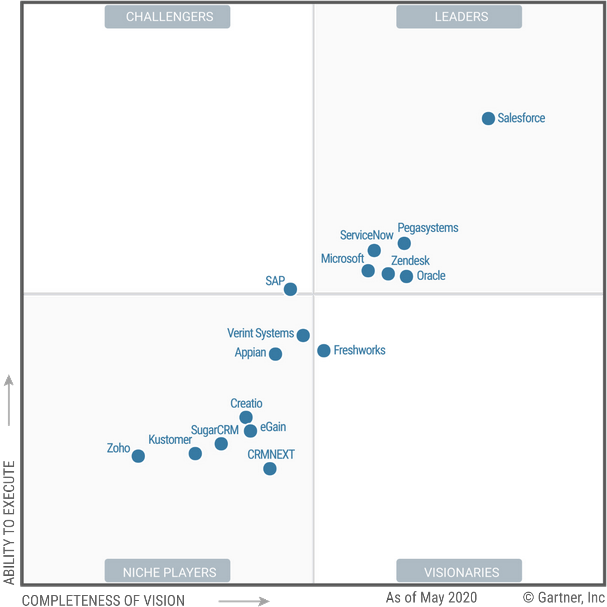From the On-Premise CRM to the cloud with Service Cloud

On-premise CRM solutions are software products that exists since the 1980s with the first client databases, which evolved in time as a solid technology for supporting business management processes of companies.
These On-Premise applications, in which companies choose to install the software locally, distinguishes itself by requiring relevant costs and efforts for its development, from the supply of the facilities (network, electricity, physical space availability); the availability of servers (updated operating systems, antivirus); to the implementation, configuration and maintenance of the software which the service is provided with. Despite this, many of these solutions are still in force today in core business applications (ERPs) or in those in which security is a key part of the business it serves.
With the arrival of cloud applications in 1997, as opposed to the existing model, a new paradigm emerges that makes it possible to offer software services without requiring investment in hardware, where only an internet browser is required to operate.
That’s when Salesforce made its appearance (1999), offering CRM solutions in the cloud and its software sales business model based on a pay-per-use formula, which is now known as SaaS (Software as a Service).

The evolution of customer service processes over time.
Initially, customer support business processes were focused on the deployment of resources in order to ensure customers’ satisfaction.
With the emergence of call centers in the 1960s, the opportunity to provide immediate customer service through the telephone channel is sought. It is a service that went from being a luxury -which only some companies could afford- to a regular and necessary channel of contact between companies and customers.
The evolution of technology and the growing market competitiveness turned these traditional call centers into contact centers. Thanks to the rise of these new channels, alongside the telephone channel, they all become the multichannel service that allows the unification of all contact points into one single point of interaction.
It is in these years when multiple channels is replaced, good start-to-finish attention is prioritised in the same channel and, in addition, it is amplified to every possible channel through the ‘omnichannel’, which comes to put order in the attention of all these mechanisms to give a unified and homogeneous service, regardless of the moment and the means by which the client has interacted.
The evolutionary leap in customer service with Service Cloud
Taking into account that every day we have more and better attention channels (phone, email, commercial visit, brick and mortar stores, chats or messaging apps, social media, websites, mobile apps, etcetera) it seems obvious that, to properly manage an omnichannel strategy, technological solutions at the level of market demands are required.
As the prestigious software research consultancy firm Gartner has certified year after year, Salesforce’s Service Cloud is the world’s # 1 customer service platform, with no competitors coming close to its leadership.

Some of the most relevant features of Service Cloud are: case management, accounts and contacts, single desktop for the agent, omnichannel routing, multiple channel integration (telephone, email, chat, social media, among others), process automation (workflows, approvals, macros), custom reports and dashboards.
These features are translated into a platform which can unify and group into a single tool all the knowledge about the client in order to customize and better anticipate the required support in every moment, distributing and simplifying the tasks of highest priority to the agent and automating those with the lowest value and volume.
Since it is a cloud service, all the information is updated in real time so it is accessible from any node, turning the business manageable from home. This is all for the benefit of the client and, therefore, also for the company.
New implementation models
As we have seen throughout the article, there are big differences between the On-Premise and Cloud solutions, both from the business point of view (much faster time-to-market, greater service capabilities, omnichannel through multiple points of contact), and from the point of view of implementation.
The dynamism and flexibility that these cloud solutions bring forth is also reflected on the many differences in implementation projects, since the technology allows to replace traditional delivery approaches based on waterfall models to agile methods of continuous software delivery.
Without going into detail about the associated benefits, these new ways of working oriented towards people instead of processes, are characterized by fostering dynamic development environments that allow the implementation of solutions more quickly through the partial and continuous delivery of products, which in turn translates into rapid delivery of value for the company and therefore the customer.
If you want to learn more about Service Cloud, we recommend you two ways to start:
And, of course, please contact us if you want help in your road towards Salesforce.
Did you find this article interesting? Share it!
Maybe your friends will also enjoy this.




